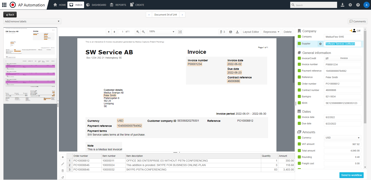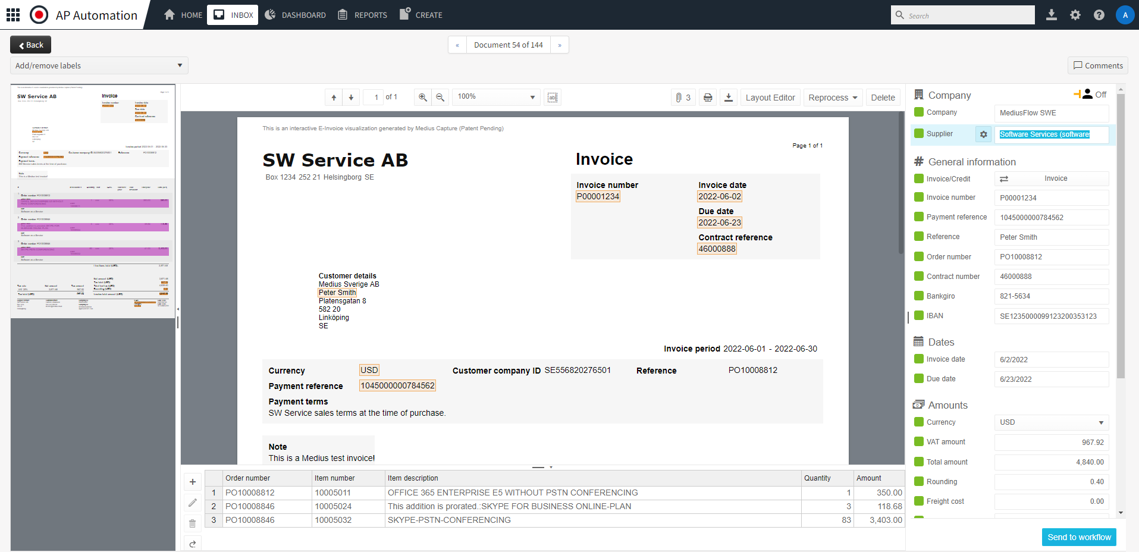The EU’s VAT digital age package: What businesses need to know
- Introduction
- What is the EU’s ViDA package?
- Key changes coming under ViDA
- ViDA implementation timeline: key dates
- What this means for businesses (and AP teams)
- How to prepare now
- The role of AP automation in VAT readiness
- Discover 5 game-changing moves for AP automation and compliance
- Start preparing for ViDA with Medius
Hear what's covered in this article:
In March 2025, the Council of the European Union officially adopted the VAT in the Digital Age (ViDA) package—a major reform that changes how VAT gets reported, collected, and managed across the EU.
If your business operates in the EU or conducts cross-border trade, this package has big implications, especially for finance and accounts payable (AP) teams. These reforms bring tighter deadlines, standardized e-invoicing formats, and real-time reporting.
But while the changes may seem complex, they also bring opportunities for simplification and smarter compliance—especially with the right automation tools and accounts payable strategy in place.
Let’s break down what’s changing, when, and how your business can prepare.
What is the EU’s ViDA package?
ViDA is the EU’s plan to bring VAT into the digital age, making tax collection easier, fighting fraud, and simplifying compliance for businesses and tax authorities. It tackles the rise of e-commerce, the growth of platform-based economies, and the pressing issue of VAT fraud, which cost EU countries around €93 trillion* in 2020.
The package focuses on three pillars:
- Mandatory electronic invoicing and digital reporting
- New VAT rules for online platforms
- Expansion of the One-Stop Shop (OSS) VAT registration system
These reforms work together to simplify VAT reporting, ease compliance, and make cross-border trade easier for businesses of all sizes.
Key changes coming under ViDA
Here’s what is in the package and what AP and finance leaders need to watch out for:
Mandatory e-invoicing
By July 2030, e-invoicing will be the standard for intra-community B2B transactions. Invoices will need to follow EU standard formats and be distributed within 10 days of the transaction. This will change how AP teams handle issuing, processing, and validating invoices across borders.
Digital reporting requirements (DRR)
Real-time electronic reporting will replace the current recapitulative statements for intra-EU transactions. Tax authorities will receive near-instant updates on VAT activity, meaning AP teams will need to increase their speed and accuracy.
VAT One-Stop Shop (OSS) expansion
Starting in July 2028, the OSS model will expand, allowing businesses to handle VAT across the EU with a single registration, eliminating the need to juggle multiple VAT numbers. This makes reporting easier, but companies will need systems in place to manage centralized VAT data efficiently.
Platform economy rules
Starting in January 2030, digital platforms like Airbnb and Uber will become the “deemed supplier” responsible for collecting VAT. This change will affect how VAT is managed for services provided by suppliers who are not registered for VAT.
Did you know? Medius is a Certified Partner Dematerialization Platform (PDP) in France – giving customers early access to compliant e-invoicing tools.

ViDA implementation timeline: key dates

-
2025:
Member states can launch national e-invoicing without EU pre‑approval
-
January 2027:
OSS extended to utilities like electricity and heating
-
July 2028:
OSS covers all B2C supplies; optional platform VAT rule begins
-
January 2030:
Deemed supplier rule becomes mandatory for platforms
-
July 2030:
MDigital reporting and e-invoicing required for cross‑border B2B
-
January 2035:
Harmonization of national e-invoicing systems pre‑dating 2024
What this means for businesses (and AP teams)
The changes under ViDA aren’t just legislative—they impact day-to-day operations, especially within accounts payable. Here’s what your AP function should be ready for:
Invoicing systems must follow EU-standard formats (EN 16931) and issue invoices within strict deadlines.
Real-time digital reporting requires faster invoice processing and greater accuracy.
Supplier relationships might shift, with fewer buyer acceptance workflows and more VAT processes handled directly by the platform.
Multiple VAT registrations may become obsolete, but systems will need to integrate with OSS platforms.
AP systems need to integrate seamlessly with OSS models and digital tax reporting platforms.
These shifts demand not just compliance, but transformation. And that starts with AP automation.
How to prepare now
Smart companies are already taking steps to modernize VAT workflows ahead of the deadlines. Here’s how to stay ahead:
Assess your current AP systems
Can they handle real-time reporting and EU-standard e-invoices?
Engage with automation and e-invoicing providers
Tech partners can ease transitions and ensure compliance.
Consult with tax and compliance experts to align strategies with national and EU-level changes.
Important AP compliance dates to know.

The role of AP automation in VAT readiness
Accounts payable automation solutions can be a game changer. As the EU shifts to standardized, digital-first tax processes, relying on manual invoices and disconnected systems will no longer suffice.
Here’s how AI-driven AP automation helps businesses stay VAT compliant and future-ready:
- Create and manage compliant e-invoices in the right EU formats, making it easy to meet technical and regulatory requirements.
- Enable real-time invoice capture and validation to reduce processing delays and avoid costly errors.
- Make supplier onboarding and communication easier with faster, smoother workflows that meet the latest approval requirements.
- Integrate with digital reporting tools to simplify the submission of structured VAT data to authorities.
- Align with evolving open-source software (OSS) models, eliminating the need for manual intervention or country-specific reporting processes.
Digitizing your AP processes now doesn’t just get you ready for ViDA compliance—it helps you build a smarter, faster, and more resilient finance function.
Discover 5 game-changing moves for AP automation and compliance.
Watch this special joint webinar from Medius and Pagero to explore the ways you can overcome the challenges - big and small - of managing you invoice and payment processes while still remaining compliant to international and local regulations and requirements.

Use change as a catalyst. Start preparing for ViDA with Medius –today.
The ViDA package is a big step toward a more digital and streamlined VAT system in the EU. The reforms might be a bit complex, but they come with clear benefits—especially for organizations that get ahead of the game.
With the right AP automation strategy, VAT compliance becomes less of a burden and more of a competitive edge. By getting ahead now, businesses can avoid penalties, enjoy smoother operations, gain better data insights, and strengthen their relationships with suppliers.
Ready to get compliant?
Medius can help you digitize AP, automate e‑invoicing, and simplify digital VAT reporting—so you're ready for every deadline ahead.
*European Commission's "2022 VAT Gap Report"








